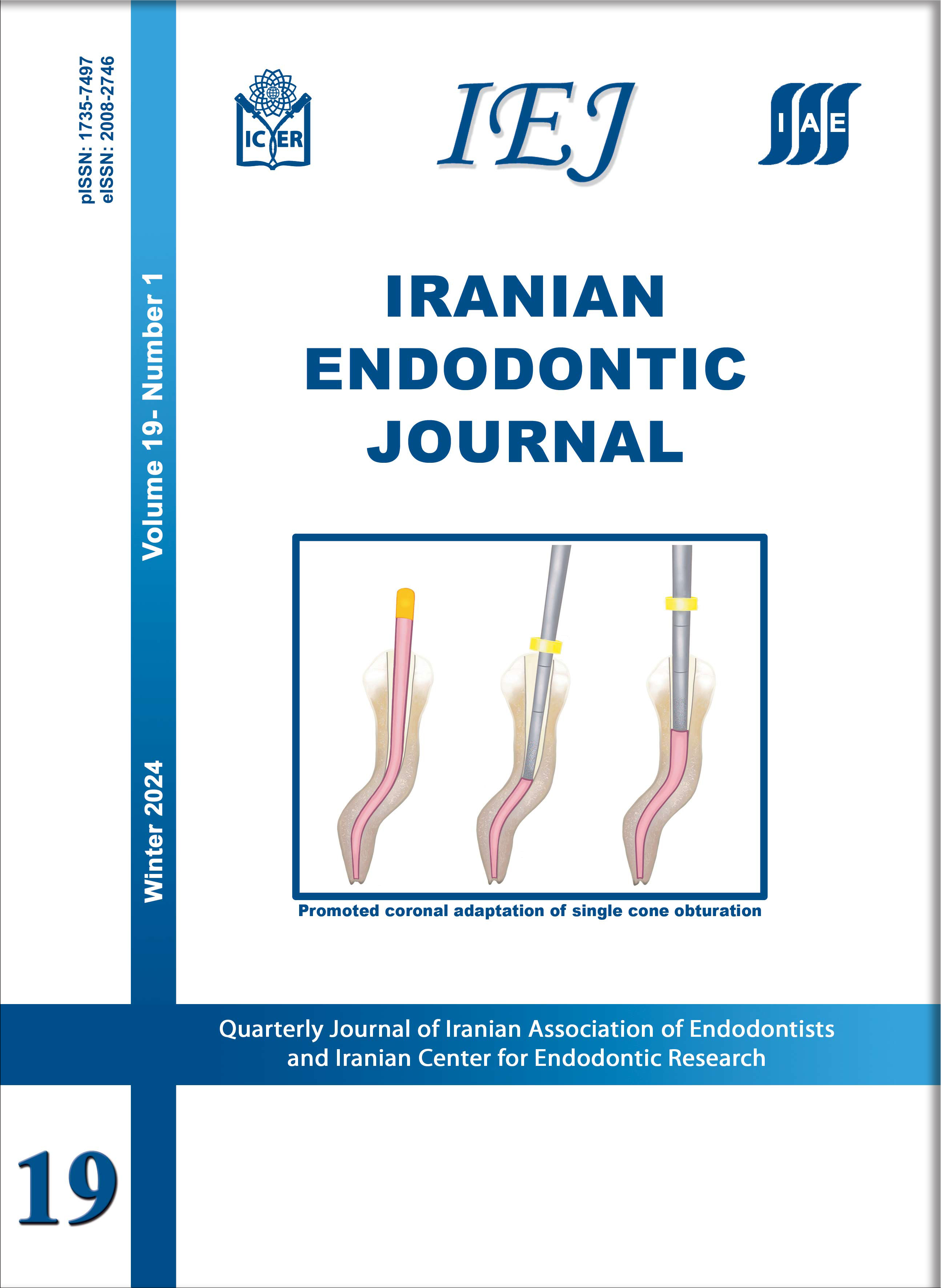Antibacterial Substantivity of Carvacrol and sodium hypochlorite in infected bovine root dentin
Iranian Endodontic Journal,
Vol. 4 No. 2 (2009),
17 April 2009,
Page 45-48
https://doi.org/10.22037/iej.v4i2.1345
INTRODUCTION: Various methods commonly used for cleaning and shaping root canals have not been successful in completely eradicating bacteria due to anatomic complexity and root canals irregularities. Disinfecting the canals with intracanal irrigants in addition to proper cleaning and shaping can produce a successful outcome. Antimicrobials with sustained antibacterial activity would be desirable for irrigation. The purpose of this study was to compare the antimicrobial substantivity of Carvacrol and 5.25% NaOCl in infected bovine root dentin. MATERIALS AND METHODS: One hundred and twenty dentin tubes prepared from bovine incisors were infected in vitro for 14 days with Enterococcus (E) faecalis. The specimens were divided into four groups including 1) Carvacrol, 2) NaOCl, 3) infected dentin tubes (positive control); and 4) sterile dentin tubes (negative control). Dentin chips were collected at five intervals (days 0, 1, 3, 7 and 28) using round burs with sequentially increasing diameters (which includes five layers of dentin) into Brain Heart Infusion (BHI) broth. In order to compare the pre- and post-irrigation antimicrobial activity of the irrigants the colony-forming units (CFU) were counted and classified as “CFU-before” and “CFU-after”. After culturing, the number of CFU with the various experimental time and dentinal layers was recounted. Two-way ANOVA test was used to analyze the effects of time and materials. One-way ANOVA and supplemental Tukey HSD test were used for pair comparison. RESULTS: CFU was significantly reduced in NaOCl group when compared to all other experimental groups (P<0.05). CONCLUSION: The substantivity of NaOCl was significantly greater than Carvacrol. Further studies are required to investigate and approve Carvacrol as a final irrigant.




